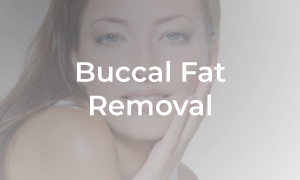Brow Lift
Brow Lift
The brow is a highly animated part of the face. Various facial and emotional expressions involve the movement of the brows. Early signs of facial aging frequently involve the brow and its surrounding skin. These signs include horizontal forehead creases, sagging brows, hooding of the upper eyelid skin, and frown lines. These signs make the patient appears old, tired, and angry.
A brow lift, also called a forehead lift, is a surgical procedure performed to rejuvenate the brow. There are various brow lift procedures, including traditional coronal brow lift, endoscopic brow lift, temporal brow lift, and direct brow lift. Brow lift can be combined with other surgical procedures such as facelift and upper eyelid surgery (blepharoplasty) to enhance the overall results.
Preparation
-
-
-
Inform the doctor of any pre-existing medical conditions and drug allergy. All medical conditions must be treated and stabilized before surgery.
-
Stop smoking at least one week before surgery. Smoking negatively affects wound healing and increases risks of other post-operation complications.
-
Stop the following medications and supplements from one week before surgery until one week after surgery.
-
All supplements containing vitamin E, ginseng, ginkgo, garlic, fish oil, and other ingredients that increase bleeding during the procedure. Other supplements, traditional medicine, and herbs, in which ingredients are unknown, have to stop as well.
-
Medicine that increases bleeding during the procedure such as aspirin, NSAIDs, and warfarin. However, you may need to consult your physician who prescribed the medication before you stop them.
-
-
On the day of surgery, wear simple and comfortable clothing. Do not wear any jewelry and metal objects on the face and body.
-
-
Surgery
-
- Endoscopic Brow Lift
Duration: 2 hours.
Anaesthesia: General anaesthesia, or local anaesthesia with sedation
Hospitalization: Daycare
Recovery*: Back to work in 3-7 days, light exercise after 2 weeks, heavy exercise after 3-4 weeks. *The speed of recovery and duration of rest may vary from person to person.
Surgery Technique: The surgeon makes several small openings behind the hairline in the forehead to insert an endoscopic camera and dissectors. The main aims are to release the forehead skin and muscles to enable the lifting of the forehead and brow.
-
- Temporal Brow Lift (see Temporal Lift)
Duration: 1-2 hours.
Anaesthesia: Local anaesthesia
Hospitalization: Not required
Recovery*: Back to work in 1-3days, light exercise after 3 days, heavy exercise after 3-4 weeks. *The speed of recovery may be different for each individual.
Surgery Technique: The surgeon makes a 3-4cm incision behind the temple hairline. The temple and forehead skin is release and lifted in an upward and outward direction. The temporal lift can elevate the lateral brow and upper eyelid, and reduce wrinkles around the outer corner of the eye The temporal lift is an effective technique to lift snd rejuvenate the temples and lateral brows.
-
- Direct Brow Lift
Duration: 1 hours.
Anaesthesia: Local anaesthesia
Hospitalization: Not required
Recovery*: Back to work in 1-3days, light exercise after 3 days, heavy exercise after 3-4 weeks. *The speed of recovery may be different for each individual.
Surgery Technique: An ellipse of skin just above the brow is removed. The brow is lifted and sutured to the forehead skin above. This technique can lift the droopy brows as well as the upper eyelids.
Post-operative Care**
-
-
-
What to expect: Swelling usually peaks on the second to third day after surgery and will gradually subside after that. Post-operative pain is generally minimal.
-
General care
-
Apply the cold pack first 3 days and the warm pack after that. Elevate the head during sleep to reduce swelling.
-
Avoid smoking for at least one month. Smoking increases the risk of wound complications.
-
Adequate rest and sleep are helpful for a speedy recovery.
-
Sleep on the back. Avoid sleeping on one side to prevent pressure on the face.
-
Be relaxed and calm. Contact the clinic if there are any queries.
-
-
Medicine: Finish the oral antibiotics as prescribed. Take the painkiller as prescribed when necessary.
-
Wound care: Clean the wound with a clean cotton tip soaked with sterile water/saline. Apply antibiotic ointment.
-
Physical activity: Avoid heavy physical activity and exercise for at least one month.
-
Follow-up: Come back one week after surgery for suture removal and review.
-
Emergency: If there is heavy bleeding, a rapid increase in swelling or severe pain, immediately contact the clinic/doctor for advice.
-
-
** The instructions in this list are only for general guidance. If you have any specific queries or concerns during the post-operative recovery, please contact the clinic for further advice.








